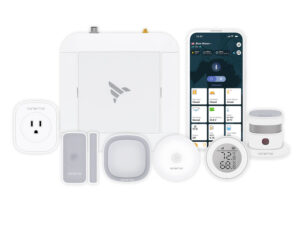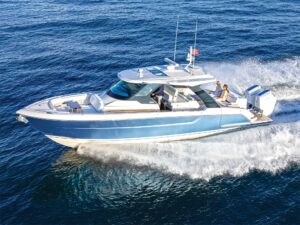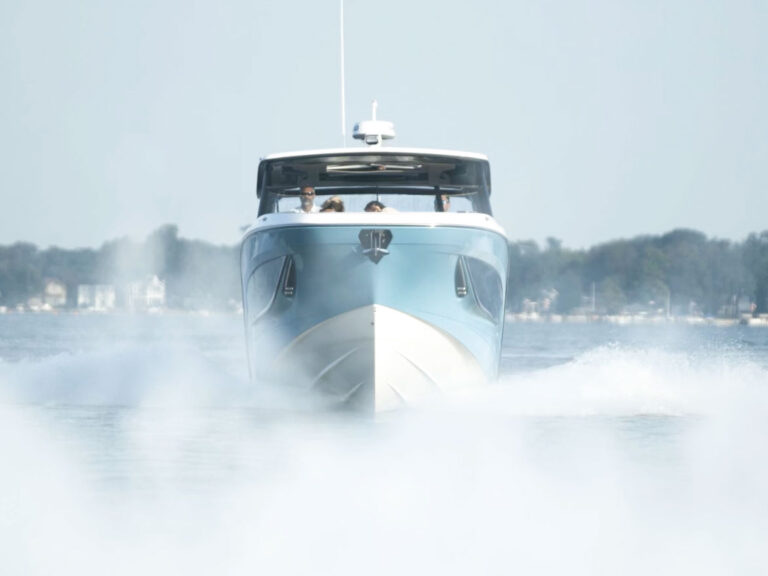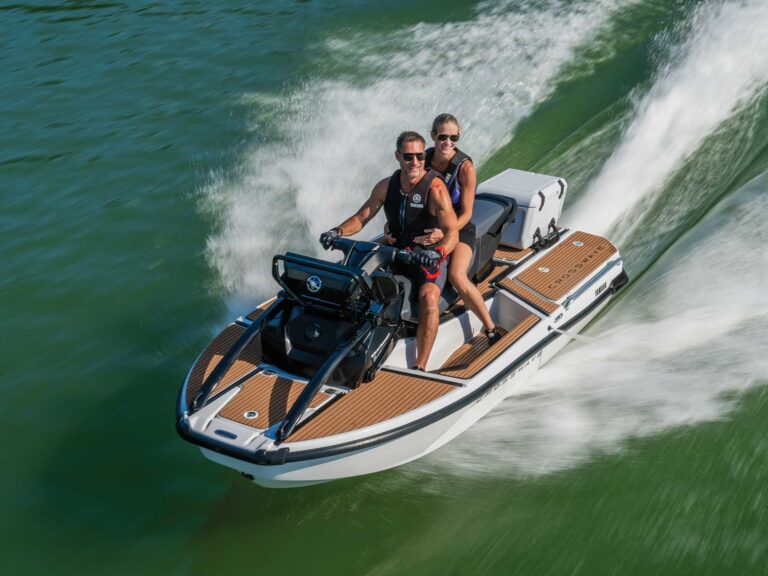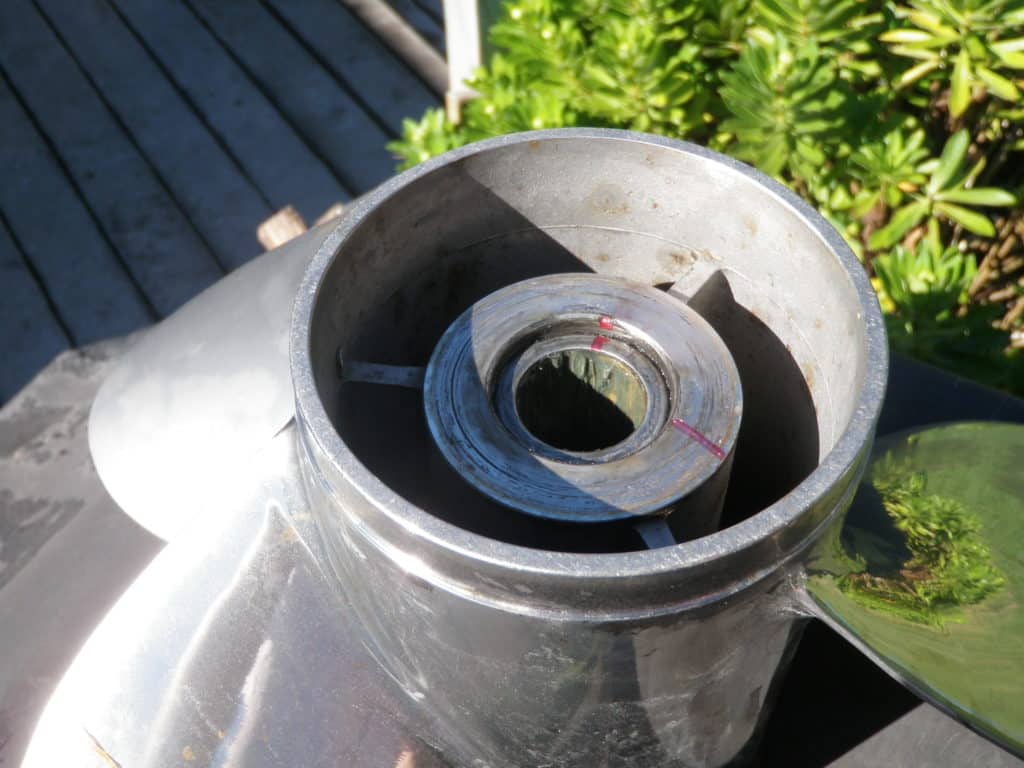
What Causes a Spun Prop?
The rubber inner bushing inside an outboard propeller hub is designed to absorb the shock created by shifting. The rubber hub bushing also serves as a “breakaway” should you strike something, allowing the prop to spin, and so protecting drive train components like gears.
Once a hub is spun, there generally remains enough friction to operate at low RPM – sort of a “get home” mode. But, when RPM is increased, the engine revs with little or no boat acceleration because the prop begins to spin. A spun hub feels like a loss of power with excessive RPM. You will likely feel the prop slipping at high RPM.
Sometimes, the hub only spins when the engine revs above a certain RPM, causing many boaters to wonder if they have spun a hub, are experiencing ventilation or cavitation, or have some kind of gear or power issue with their outboard.
How to Check for a Spun Prop Hub
To tell if your hub has spun, mark a line on the back of the prop hub with lipstick. You can also score your mark using a file. With the mark in place over the inner and outer hub, it’s a simple matter to pull the prop and see if the mark has broken in two. If it has, you have spun a hub.
How to Fix a Spun Prop Hub
You’ll likely want to take it to a marine mechanic or prop shop if you’re not handy. Prop hub replacement cost is often anywhere from $50 to $100, depending on your engine and where you take it. Fixing the prop requires pressing out the old hub and replacing it with a new hub. If you have the proper tools, you can do this process yourself.


